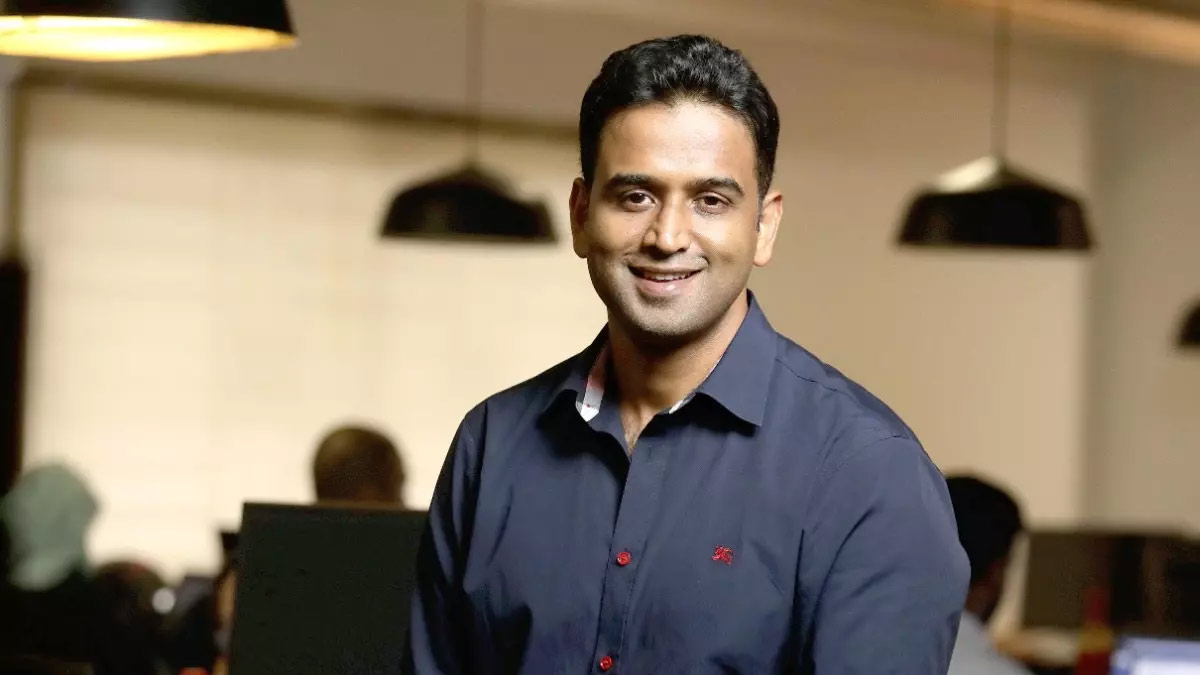
In his triumphant return to the public eye, Zerodha co-founder Nithin Kamath graced the stage of the Zero1 conference, marking his first appearance since disclosing a mild stroke two months ago. The 44-year-old entrepreneur, renowned for his contributions to the financial sector, engaged in discussions revolving around health and wealth, signalling a significant step forward in his journey of recovery.
Table of Content:-
Addressing his followers on social media platform X (formerly Twitter), Kamath expressed his gratitude and gradual recovery, stating, "Slowly getting back to normal. At the Zero1 fest, talking about health and wealth with @nasdaily, JC @FITTRwithsquats, and @twitellectual."
Slowly getting back to normal. ��
— Nithin Kamath (@Nithin0dha) April 29, 2024
At the Zero1 fest, talking about health and wealth with @nasdaily, JC @FITTRwithsquats, and @twitellectual. pic.twitter.com/CFOIdlOwZD
Nithin Kamath’s Stroke Revelation
In February, Kamath candidly disclosed his health setback, revealing the occurrence of a mild stroke. Reflecting on potential triggers, he attributed the episode to a combination of factors including personal loss, inadequate rest, exhaustion, and overexertion. Despite the challenges, Kamath exhibited resilience, emphasising his gradual improvement and optimistic outlook on the road to full recovery.
"I've gone from having a big droop in the face and not being able to read or write to having a slight droop but being able to read and write more. From being absent-minded to more present-minded. So, 3 to 6 months for full recovery," he shared.
Stroke Rehabilitation: A Path to Recovery
Stroke rehabilitation encompasses a multifaceted approach aimed at restoring lost skills and enhancing quality of life post-stroke. Tailored rehabilitation programs address various aspects of physical, cognitive, and emotional well-being, offering a roadmap to independence and improved functionality.
Understanding Stroke Rehabilitation
Stroke rehabilitation endeavours to address the diverse array of challenges stemming from stroke-induced impairments. By targeting specific areas of deficit, rehabilitation aims to facilitate recovery and promote adaptive strategies for daily living.
Also Read: Jeff Bridges Shares Health Update 3 Years After Lymphoma Diagnosis; Know All About The Condition
Physical Rehabilitation
Physical rehabilitation interventions focus on restoring mobility, strength, and coordination compromised by stroke-related impairments. Through targeted exercises and therapeutic modalities, individuals engage in repetitive actions to enhance motor function and regain independence.
Motor-Skill Exercises
Designed to improve muscle strength and coordination, motor-skill exercises target essential functions such as balance, walking, and swallowing.
Mobility Training
Utilizing mobility aids and assistive devices, individuals learn techniques to navigate their environment safely, promoting autonomy and confidence in daily activities.
Constraint-Induced Therapy
By restricting the use of unaffected limbs, constraint-induced therapy encourages intensive training of the affected limb, facilitating neural reorganisation and functional recovery.
Range-of-Motion Therapy
Addressing muscle spasticity and limited mobility, range-of-motion therapy aims to alleviate stiffness and enhance flexibility through targeted interventions.

Technological Advancements in Rehabilitation
Advancements in technology have revolutionised stroke rehabilitation, offering innovative solutions to augment traditional therapeutic approaches.
Functional Electrical Stimulation
By eliciting muscle contractions through electrical stimulation, this technique promotes muscle reeducation and functional improvement in weakened limbs.
Robotic Technology
Robotic devices assist individuals in performing repetitive movements, facilitating motor learning and enhancing motor control post-stroke.
Virtual Reality
Immersive virtual environments provide a platform for engaging rehabilitation activities, fostering cognitive engagement and motor skill development in a dynamic setting.
Also Read: Debinna Bonnerjee Flaunts Post-Partum Curves; Physiological Changes in Pregnancy
Cognitive and Emotional Rehabilitation
Stroke rehabilitation extends beyond physical recovery to encompass cognitive and emotional well-being, addressing the psychological and social ramifications of stroke.
Therapy for Cognitive Symptoms
Occupational therapy and speech therapy target cognitive deficits, addressing memory, problem-solving, and social skills to enhance functional independence and participation in daily life.
Communication Therapy
Speech therapy interventions focus on restoring language and communication abilities, enabling individuals to regain proficiency in speaking, listening, and comprehension.
Psychological Support
Emotional adjustment and psychological well-being are integral components of stroke rehabilitation, with counselling and support services facilitating coping strategies and adaptive coping mechanisms.
Rehabilitation Team and Collaborative Care
Stroke rehabilitation involves a multidisciplinary team of healthcare professionals dedicated to optimising outcomes and promoting holistic recovery.
Specialists in Physical Needs
Physicians, rehabilitation nurses, physical therapists, and occupational therapists collaborate to address physical impairments and facilitate functional independence.
Specialists in Cognitive and Emotional Needs
Speech and language pathologists, psychologists, social workers, and vocational counselors provide comprehensive support for cognitive and emotional well-being, addressing the diverse needs of stroke survivors.
Bottomline
Stroke rehabilitation represents a transformative journey towards recovery, characterised by resilience, determination, and unwavering support. Through personalised interventions and collaborative care, individuals embark on a path of restoration, reclaiming lost abilities and embracing newfound possibilities. As Nithin Kamath's inspiring journey exemplifies, stroke rehabilitation offers hope, empowerment, and the promise of a brighter future beyond adversity.
Also watch this video
How we keep this article up to date:
We work with experts and keep a close eye on the latest in health and wellness. Whenever there is a new research or helpful information, we update our articles with accurate and useful advice.
Current Version